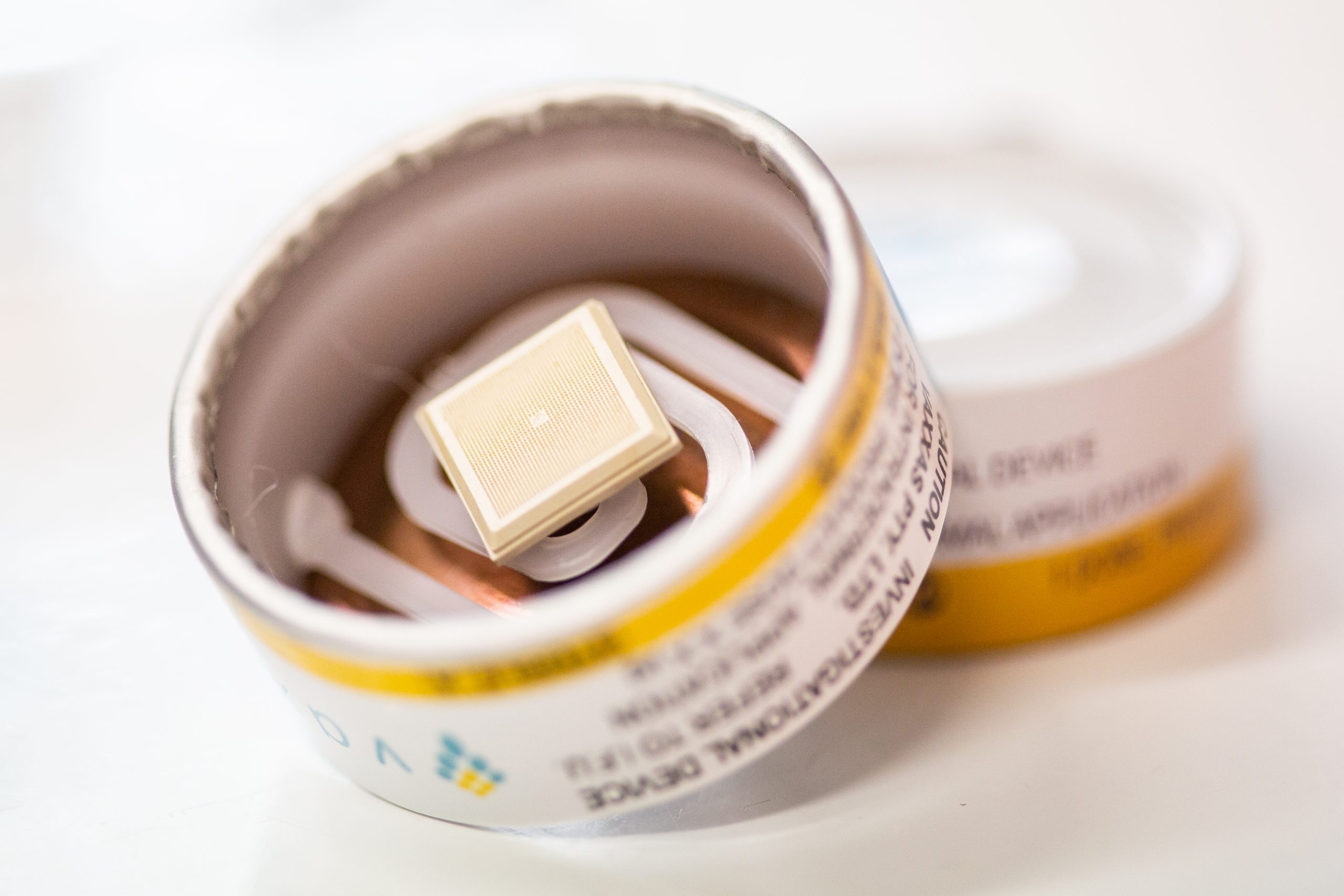While several COVID-19 vaccines have been granted emergency authorisation for use, several new vaccine resistant strains have emerged. This raises concerns about the effectiveness of these vaccines in the future and highlights the need for further COVID-19 vaccine development.
Global vaccination programmes are currently limited by the quantity of vaccine that can be produced. A method to reduce the amount of vaccine needed per dose could overcome this barrier. Some of the existing vaccines also require ultra-low temperature storage, making transport and global distribution challenging, especially to resource-limited countries. Furthermore, the logistics of deploying a large workforce to deliver injections is also hindering the roll-out of vaccines. If vaccines could be self administered, it could decrease this logistical burden.

The High-Density Microarray Patch (HD-MAP) vaccine delivery system developed by Vaxxas
Researchers at the University of Queensland (UQ) have used spin-out company Vaxxas’ proprietary technology, the High-Density Microarray patch (HD-MAP) to deliver the US-developed COVID-19 vaccine candidate HexaPro to mice.
Microscopy Australia’s facilities were used extensively in the development of the HD-MAP and continue to support spin-out company, Vaxxas, as they commercialise their innovative product. Fellow NCRIS facility ANFF was also used in the development.
The HD-MAP has 5000 microscopic projections that deliver the vaccine to the dermal and upper dermal layers of the skin, which are rich in immune cells. The team found that skin provides a much better protective response than traditional injections into muscle.
Mice that had been genetically modified to have the same receptor that SARS-CoV-2 uses to infect humans, were vaccinated with the COVID-19 vaccine using the HD-MAP. The team then used scanning electron microscopy, at Microscopy Australia’s UQ facility, to confirm that the COVID-19 vaccine coating had been delivered into the skin of the mice. They found the vaccine provided complete protection from a lethal amount the virus after just one dose. This was true for the several virus variants tested.
The HD-MAP is being used by several other research teams, who also use Microscopy Australia’s facilities, in a variety of projects including successful clinical trials of polio and influenza vaccines and pre-clinical trials of dengue fever and human papillomavirus vaccines.

Colour-enhanced scanning electron micrograph of the High-Density Microarray Patch (HD-MAP, previously Nanopatch™) (green) coated in vaccine (yellow)
The COVID-19 vaccine HexaPro, when delivered via the HD-MAP developed by Australian spin-out Vaxxas, provides many benefits. Compared to existing needle-based COVID-19 vaccinations it:
“These results are extremely clear – vaccination by HD-MAP produces much stronger and more protective immune responses against COVID-19 in model systems than via needle or syringe.
The prospect of having a single-dose vaccine, that could be easily distributed and self-administered, would greatly improve global pandemic vaccination capabilities.”
– President and CEO of Vaxxas, David L. Hoey
Read the paper here: https://doi.org/10.1101/2021.05.30.446357

The UQ research team, featuring (foreground, L-R) Dr Chris McMillan, Dr David Muller, (background, L-R) Dr Alberto Amarilla, Dr Naphak Modhiran Ortiz and Ms Jovin Choo.
The High-density microarray patch (HD-MAP, previously called the Nanopatch) in use
June 4, 2021